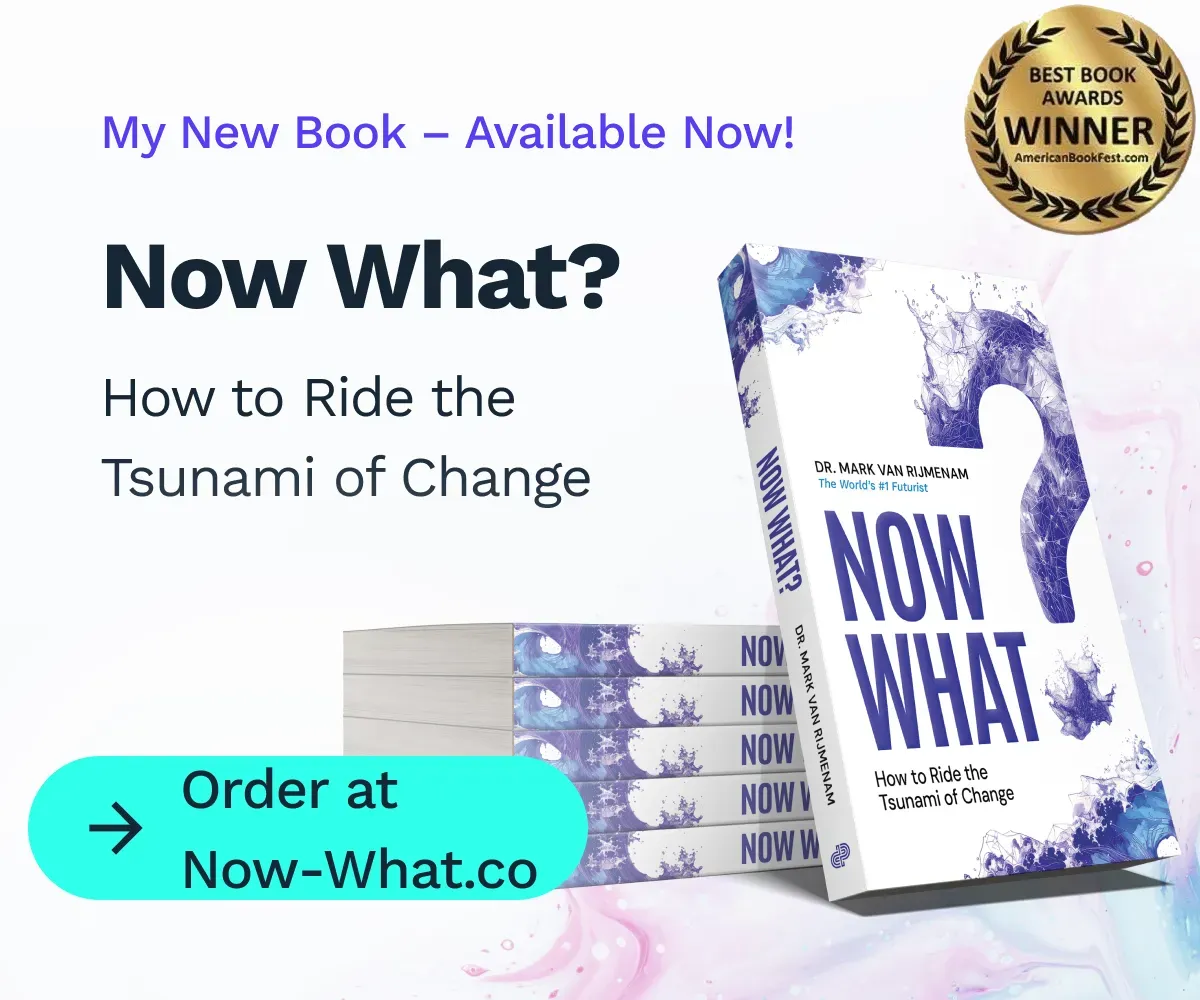To Save Innovation, We Need to Change Science

Science’s primary activity is discovery. It aims to explain how the world works and we can use that knowledge to change our world. To do so, over the centuries, the scientific method was developed, and it has proven its value. It helps us answer practical, but often important, questions. Answering these questions often lead to innovations that improve our world.
Discovery is done through observation and what researchers discover is written down, which we call data. This data can reveal structure (describing an object numerically) or behaviour (written descriptions about an organism or object). These observations are not the end-goal.
To understand what is going on, researchers need to analyse the data and generate generalisations based on observations. These generalisations help to make predictions, which are then tested through carefully controlled experiments to see if they stand firm. The objective is to prove or disprove the original hypothesis and with that answer the original question. The results are shared through scientific papers, which are presented to the academic world for thorough scrutiny.
The Scientific Method
The scientific process has to be systematic, which means that other researchers should be able to repeat the test to verify the results. It is therefore important that the data remains available after the initial experiment. Once a finding has been presented, other researchers not only aim to verify the results but also aim to falsify the statements made. Falsification means the act of trying to falsify a statement, hypothesis or theory. The more falsifications fail, the stronger the original statement, hypothesis or theory. This can be summarised as the scientific method: ask questions, make hypotheses and collect observations to test those hypotheses.
The scientific method is based on observations and tests, and it has led to a collaborative endeavour resulting in ever incremental knowledge. As such, a crucial component of the scientific method is to share the observations and tests with the rest of the world through scientific papers. Often, our knowledge can be advanced the most when someone presents a radical new idea, which is subsequently published and verified, resulting in a new branch of knowledge that can bring new opportunities.
The scientific method is one of mankind’s greatest inventions as it helps to advance our knowledge of the world. However, there is still ample room for improving the scientific method as there are multiple problems to it, which are especially related to the sharing of statements, hypotheses and theories, i.e. the scientific publishing. Therefore, if we want to improve our understanding of the world, we first have to improve the scientific method.
Problems Associated with the Scientific Method
There are many problems with the scientific method, and this is nothing new. For decades, researchers have complained about the method. As such the scientific method is ripe for disruption. Although the scientific method has proven itself over the centuries, the publication of scientific papers is flawed. The $32 billion market is controlled by just a few large scientific publishers who demand all copyrights to be transferred to them, require expensive fees for access, while returning none of it to the original authors (resulting in a 36% profit margin for them, which is significantly higher than Google). In addition, the process is slow, not transparent and no longer encourages radical new ideas that could advance our knowledge. In general, there are three problem areas, each with multiple problems.
1. Publishing: A Slow and Not Transparent Method
Publishing an academic paper requires a lot of patience. It can easily take 6-9 months before an article is published. However, generally a lot longer as often a paper is rejected the first or second time. Since each process from submitting to receiving a first decision takes around four months, the time-to-publication is often longer than a year.
During this time, the paper is sent for peer review, which is an important aspect of the scientific method. However, in its current model, it does not work properly. The first phase of the process consists of an editor making the first shift of all the papers sent to a journal. It helps a lot if you know the editor and cite the editor in your paper. If not, your chances to get through the first round have reduced significantly.
If your paper discusses a radical idea, your chances to get published are even lower. As mentioned, often our knowledge of the world advances the most when someone comes up with a new radical idea. Unfortunately, the academic publishing world does not like radical ideas. To explain the problem, let’ see what Google’s AI guru Geoffrey Hinton has to say:
“One big challenge the community faces is that if you want to get a paper published in machine learning now it’s got to have a table in it, with all these different data sets across the top, and all these different methods along the side and your method has to look like the best one. If it doesn’t look like that, it’s hard to get published. I don’t think that’s encouraging people to think about radically new ideas.
Now if you send in a paper that has a radically new idea, there’s no chance in hell it will get accepted, because it’s going to get some junior reviewer who doesn’t understand it. Or it’s going to get a senior reviewer who’s trying to review too many papers and doesn’t understand it first time round and assumes it must be nonsense. Anything that makes the brain hurt is not going to get accepted. And I think that’s really bad.”
Once selected for peer review, the editor has to select from a limited pool of available academics. Often the peer reviewers do not have a full understanding of the subject and are not the right people to determine whether or not a paper should be published. As a result, it can take two or three iterations for a good paper to be finally accepted by a journal.
Once that happens, the problems get worse. Publications in journals is a prerequisite for academics if they want to grow their reputation and get a job promotion. However, whenever you submit to a journal, you have to give away your copyright to the scientific publisher. This is strange, you work on a paper for a long time, sometimes years, and the moment you wish to publish it you have to give away your copyright. This is outright theft. Here is an example from a journal:
“Please confirm that, if your article is accepted for publication, you are willing to transfer all rights to your submission to [Journal A]. (You will be allowed to republish your article in your own work at no additional cost.)”
Due to the slow, not transparent, bureaucratic and unfair publishing process, it becomes increasingly difficult for (new) scientists to get their knowledge out to the world. However, once they finally manage to publish a paper in a respectable journal, the problems don’t end.
2. Accessibility: publicly-funded knowledge not publicly available
As a scientist, of course, you want your paper to be read by as many people as possible. Only due to new knowledge which is publicly available can we truly advance our world. However, the moment a scientific paper has been accepted by a journal, it disappears behind an expensive paywall. Journals charge on average $30 per article for access to the paper, none of which is paid to the authors of the paper. In addition, universities have to purchase expensive subscriptions to obtain access to the papers required for their academics (staff and students). On average, universities pay several million euros per year to obtain access to these papers. Money that is often paid for by a government.
Fortunately, there is a movement towards Open Access. Open Access papers are published by journals but are immediately available to the public. This seems to be a good thing. However, it comes at a cost for universities: It can easily cost €1000-€2000 per article, to be paid for by universities, to make an article open access. This means that universities pay for research and also have to pay to make that research publicly available. There is a trend towards more open access papers, which means that publishing becomes very expensive for universities. If there would be a system that would make peer-reviewed papers publicly available, it could save universities a lot of, public, money.
3. Funding: unfair distribution of (public) money
Academic publishers take a lot of the public funds provided to universities. In general, governments provide funding to universities in one way or another, often through research grants (apart from private universities). With these funds, universities can pay academics to do research, and they purchase subscriptions to journals. As a result, a large chunk of publicly funded money ends up in the hands of commercial organisations who do not share this with the public. Publicly funded research predominantly benefits commercial organisations. Any research paid for by public money should be publicly available for free or at cost price.
The Time for Change is Now
It may be clear, the scientific method has its problems and challenges, and there are plenty of problems with the existing academic model. For centuries, it is scientific research that has made possible all the advancements we have made. However, often those who benefit from this research are not the ones who paid for it. It is time for change.
Technological advancements in areas such as big data analytics, Blockchain and AI have made it possible to come up with new, radical, solutions to today’s problems. The speed at which these technologies are developed, enables us to look at existing problems from a different angle and propose radical solutions. Across the globe we see new startups combining these technologies in innovative ways to build solutions for a better world. The configuration of new technologies, as well as the intent of the platform, determine how it can contribute to improving today’s world.
Therefore, I am proud to announce that we are working on a solution. Imagjn aims to apply these technological advancements to change the academic publishing process. We believe that publicly-funded knowledge should be publicly available, and academics should retain the full copyright of their work. Imagjn will offer the academic world a new approach. We aim to do so, by building a new solution and to improve the scientific method.
Image: Egorov Artem/Shutterstock





